|
53. Maculinea teleius (Bergsträsser, 1779) / Scarce large blue / Lycaenidae – Polyommatinae
NL: pimpernelblauwtje / D: Großer Moorbläuling, Heller Wiesenknopf-Ameisen-Bläuling / F: l’azuré de la sanguisorbe, l’argus strié
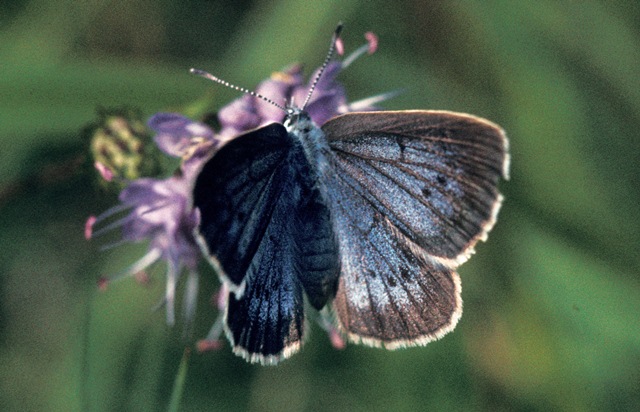 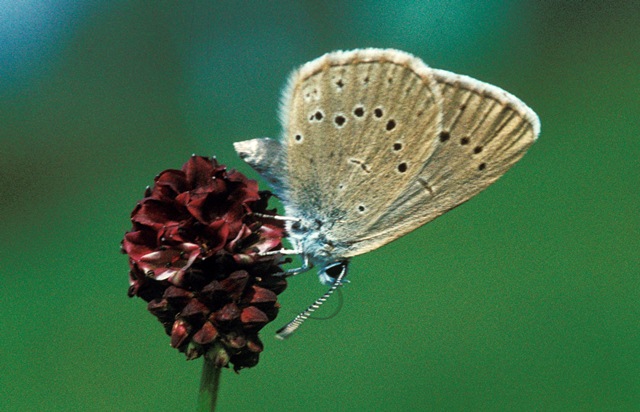 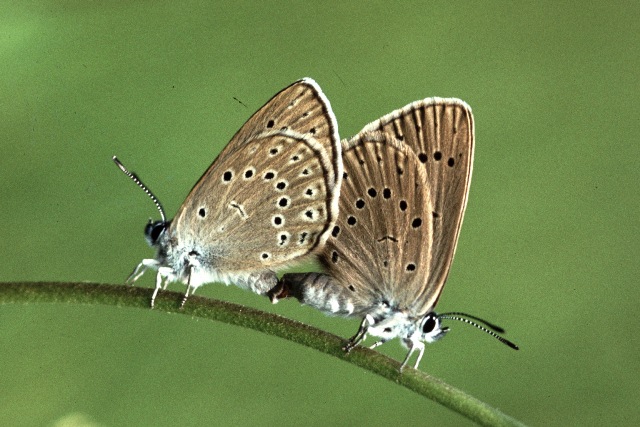
Photographs: Frits Bink ©.
Small, wing length 17 (16-18) mm. In the Benelux, it had occurred in the Netherlands up to 1970 and in Flanders in the valley of the Zenne, Dijle and Mark up to 1980 (Maas & van Dyck 1999: 238-239).
In Wallonia and Luxemburg the species has never been observed.
The butterfly is on the wing from early-July until early-August. It is known from sub-continental and severe continental climates, amplitude 7 to 20. Required heat sum is 850°d and the maximum tolerated 1800°d, the corresponding climate windows are 25 and 35 weeks.
It was reintroduced in 1990, the butterflies were captured in Poland near Krakow and released in the nature reserve Moerputten near Den Bosch (‘s Hertogenbosch) in the province of Brabant (Wynhoff 2001) and it still exists at that locality.
Ecological characteristics
Behaviour over time
Overwintering: half grown larva in fourth (last) instar in ant's nest.
Reproduction: oviposition starts after 1-2 days when the body contains 140 (111-165) eggs, potential 1.1 times as much.
Larval feeding periods: in flower head 25 (20-30) days in period end-July until mid-September, as carnivore in the ants nest 4-6-weeks in the period mid-August until early-October, next spring 6-7 weeks in period early-May until end-July.
Generations: always one.
Spreading of risk: spread in period of hatching of the adult butterflies.
Life cycle: egg about 8 days; larva 47 weeks; pupa about 25 days.
Life span of adult: short, 2 weeks.
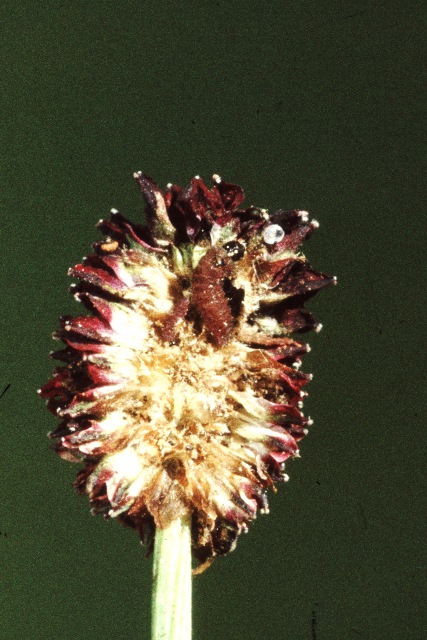
Photographs: Frits Bink ©.
Behaviour in space
From stay-at-home to migrant: stay-at-home, spatial requirement modest.
Finding a mate: males patrol, however both sexes meet each other on the flower heads of the host.
Orientation in the landscape: on the gradient from bog to rivulet, also anthropogenic meadows.
Oviposition: on the small and young flower heads of great burnet, one egg per flower head.
Defence
Threats from other organisms: alien ants.
Myrmecophily: micro pores and honey gland functional at the fourth instar.
Threats from the environment: survival of ant nest.
Feeding habits
Adult: nectar from the flowers of its host, great burnet.
Larva: after the third moult larva drops onto the ground where it will picked up by an ant, and as soon as it is brought into an ants nest it will begin its carnivorous habit and devour the young of its host. The larva is a wolf in sheep’s clothing.
Larval foodplants
Plant species: Rosaceae, Sanguisorba officinalis.
Journal
Rearing experiment based on specimens from Zimmerbach, France:
27 July 1983: 5 females captured in a hayfield full of great burnet.
2 August: dissected the females, only one had laid some eggs.
20 August 1984: visited the same locality at the end of the flight period; both M. teleius & M. nausithous were present.
Table 53-1. Results of dissections

Table 53-2. Collection and observation localities
F, Marais de Chautagne 45° 53’ 23”N – 5° 49’ 56”E; 19 July 1986.
F, Zimmerbach 270 m, 48° 04’ 25”N – 7° 14’ 45”E; 27 July 1983, 20 August 1984.
Fig. 53-1. Maculinea teleius, phenogram adapted from Bos et al. 2006: 181.

Fig. 53-2. Maculinea teleius, habitat characteristics.
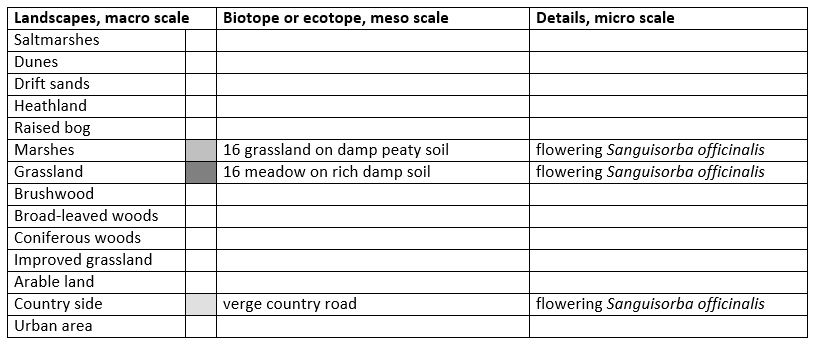
Fig. 53-3. Maculinea teleius, climate matrix, heat-sums 850 - 1800°d.
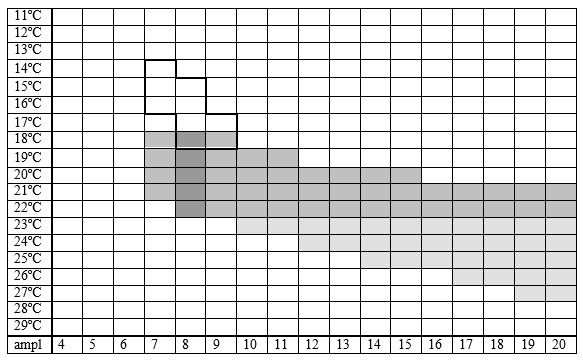
|









